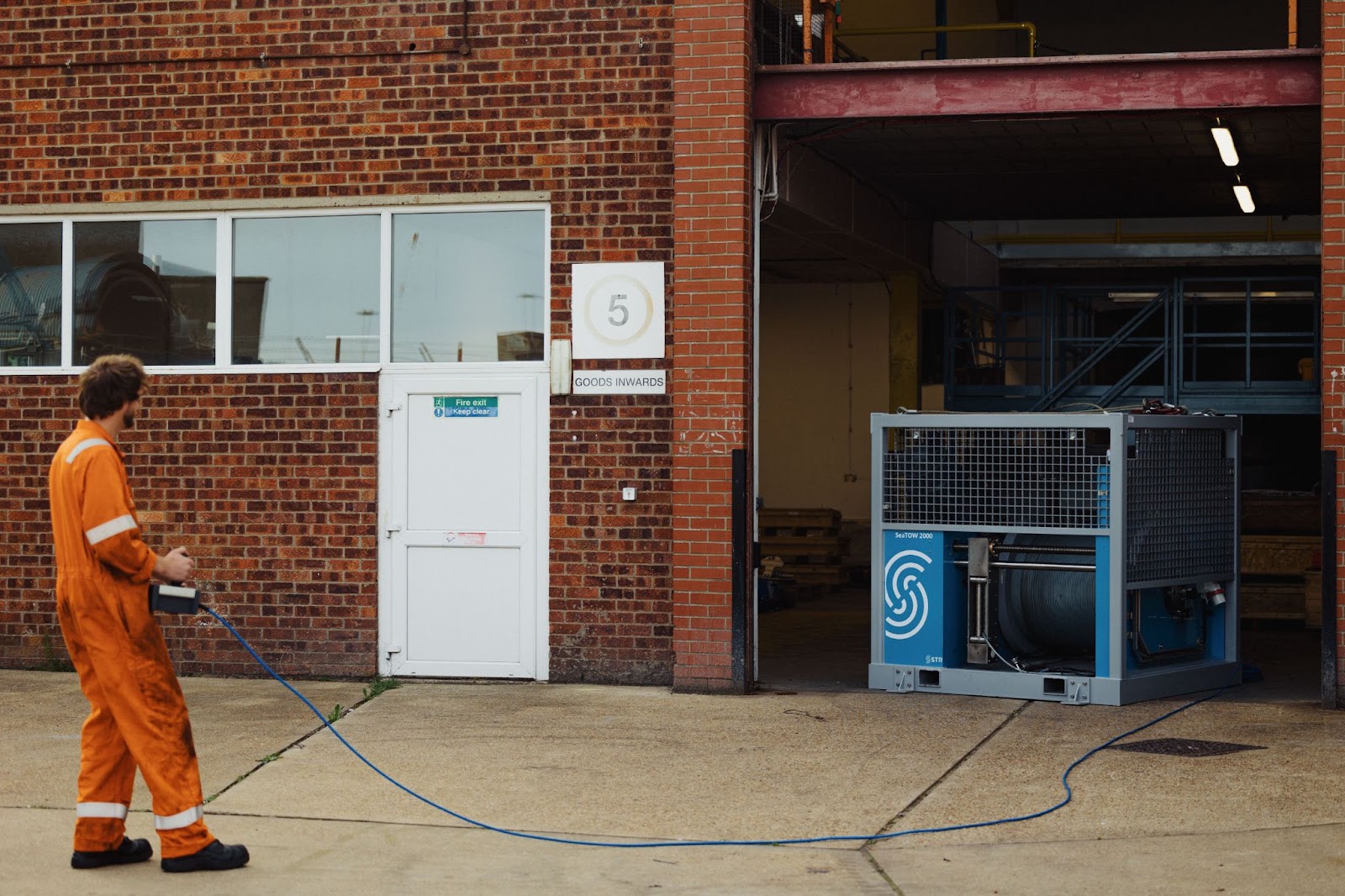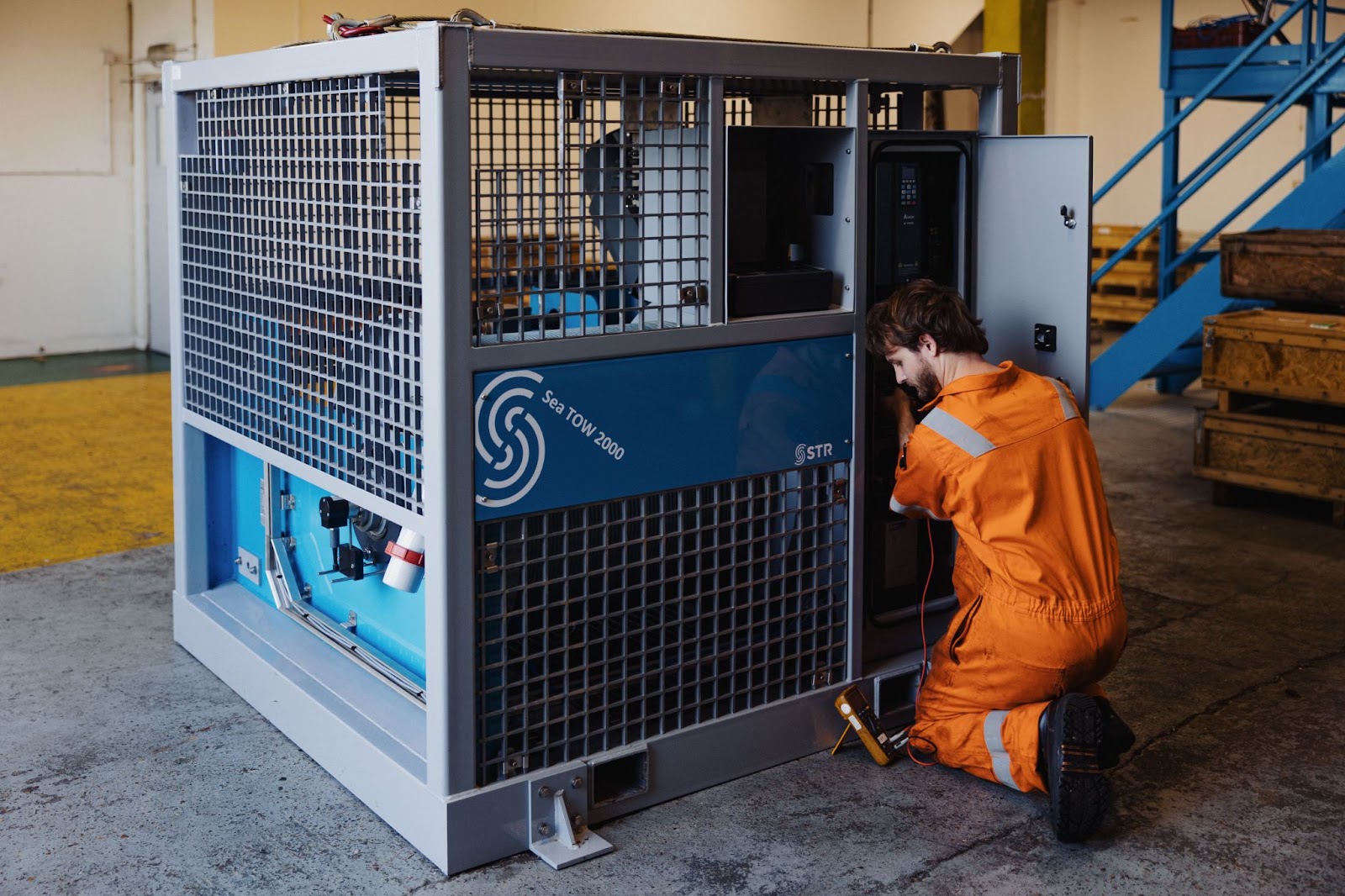As the subsea sector continues to progress, new innovations in technology and equipment continue to emerge, resulting in cost efficiencies and enhanced operational output for operators in a number of industries.
Electric winches have grown in popularity and application in recent years due to the many benefits they have over their hydraulic counterparts, and are now seen by many in the subsea sector as a go-to piece of subsea equipment.
Here we share the core capabilities of electric winches, their primary benefits and how they can be the key to unlocking safe and efficient subsea operations…

The primary function of an electric winch
Electric winches are used to lift, pull and position heavy loads underwater, making them an essential piece of the puzzle when it comes to deployment and recovery during subsea operations. Using an electrical system, these winches are powered by a direct current of electricity to enable its lifting mechanism, which winds a cable up or down by rolling a large drum.
The key components of an electric winch include the cylindrical drum – the size of which will determine the winding speed and cable length – as well as a rope or cable which is made of steel or synthetics depending on the strength requirements. The clutch allows for free spooling where fast deployment is needed, while the automatic brake ensures optimum safety by locking the drum when it’s not actively pulling, and the control system enables its use from a safe distance.
Finally, the electric motor forms the heartbeat of the winch, with a battery or separate power source to drive its lifting and lowering functions. This is its core differentiator to hydraulic winches which are driven by a hydraulic system.
Applications of an electric winch
One of the reasons electric winches have become widely used in the subsea sector is their incredible versatility. Depending on the size and capability of the electric winch, you can lift and lower virtually anything, whether it’s to load equipment on and off the vessel, or lowering it underwater during deployment and recovery.
Electric winches have been widely utilised across a number of industries where subsea projects are essential. Within the rapidly growing renewables sector, electric winches offer high performance capabilities while reducing energy consumption and supporting cleaner operations, making them a go-to choice.
They have also helped to progress the oil and gas market to support inspection, maintenance and repair efforts, as well as commissioning and decommissioning projects. Similarly, in the marine science sector, winches are utilised for lowering and raising survey or sampling equipment to ensure high quality data acquisition while protecting the surrounding environment.
Finally electric winches offer the flexibility to support operations in both the manned and unmanned surface vehicle (USV) market, allowing for projects to be completed remotely or from a survey vessel, to improve overall safety and flexibility.

Benefits of an electric winch
Electric winches offer a number of benefits which have made them a preferred alternative to their hydraulic counterparts. One of their primary advantages is their ease of use; unlike hydraulic winches, which require a complex setup with pumps and fluid systems, electric winches are powered directly by a battery or a connection to the electrical system. This makes them much easier to install and maintain which results in cost efficiencies, reduced downtime and enhanced safety.
Electric winches also provide a significant advantage in terms of their remote operation capabilities. With technological advancements, many electric winches now come with wireless remote control systems that enable operators to manage a winch from a distance, increasing safety and precision as a result.
Additionally, electric winches consume much less energy and tend to be quieter than their hydraulic winches, which is crucial for cost savings and ensuring that sensitive marine environments are protected. Even when not in use, hydraulic winches require a huge amount of power to stay operationally ready and are renowned for being noisy when in use.
This combination of versatility, ease of use, and safety features positions electric winches as a superior choice for professionals seeking reliable and efficient load handling solutions.
Choosing the right electric winch for your subsea project
When it comes to subsea operations, choosing the right winch is crucial for safety reasons and to ensure effective operations. This involves a number of important considerations, such as the environmental conditions which could damage or erode winch over time, the control mechanisms required and the desired process for installation and maintenance needed.
What is arguably the most important consideration when choosing the right electric winch is the load capacity needed for the project. Winches vary in how heavy a load they can carry, so it’s crucial to take this into account and select a winch. As a general guideline, the chosen winch should be able to pull at least 1.5 times the weight of the equipment or vehicle being lifted and positioned.
At STR, we have the largest fleet of electric winches in the world, with a team of experts who can support you in choosing the right winch to ensure efficient subsea data acquisition for your offshore operations. No matter the project scope, our innovative electric winch designs and bespoke technical support offers a cost-effective solution for a range of subsea projects.
Share
